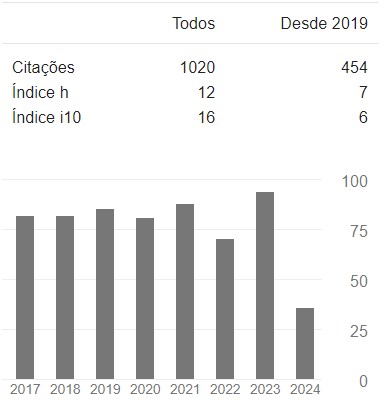A project of ideal communication through decentralized views in Lídia Jorge and William Faulkner
DOI:
https://doi.org/10.5433/1678-2054.2015v30p62Keywords:
Intertextuality, Insanes, William Faulkner, Lídia JorgeAbstract
This article aims to analyze the relation of intertextuality existent between the novels The sound and the fury, by William Faulkner, and O vento assobiando nas gruas, by Portuguese writer Lídia Jorge, from the point of view of marginal and insane narrators, with ineffective enunciation processes. Furthermore, it can be seen in the approach of both stories that embrace familiar saga, craziness, and communicative failure, presented by them, an effort to reach a common project of ideal communication, encouraging reader’s empathy with decentralized views and new possibilities of existential examinations.Downloads
References
FAULKNER, William. O som e a fúria. São Paulo: Cosac Naify, 2009.
JORGE, Lídia. Na estante os 10 livros da minha vida, rubricas. Lisboa: 14/04/2014. Revista Estante. Disponível em: http://www.revistaestante.fnac.pt/lidia-jorge/. Acesso em: 15 jun. 2015.
JORGE, Lídia. O vento assobiando nas gruas. 4ª ed. Lisboa: Dom Quixote, 2002.
JORGE, Lídia. William Faulkner. Um percurso de leitura. Raízes, 07-03-2012. Disponível em: http://www.portaldaliteratura.com/cronicas.php?id=75. Acesso em: 10 jun. 2015.
KELM, Miriam Denise. A identidade e a história portuguesa: duas constantes revisitadas na obra de Lídia Jorge. Revista Letras, Santa Maria, v. 22, n. 45, p. 147-163, jul./dez. 2012. Disponível em: http://w3.ufsm.br/revistaletras/artigos_r45/artigo_9.pdf. Acesso em: 01 abr. 2014.
KRISTEVA, Julia. A palavra, o diálogo e romance. Introdução à semanálise. São Paulo: Perspectiva, 2005. p. 65-95.
KUMINOVA, Olga. Faulkner’s The Sound and the Fury as a struggle for ideal communication. Literature Interpretation Theory, 21, 2010, p. 41-60. DOI: 10.1080/10436920903547406
LIMA, Isabel Pires de. Palavra e identidade(s) em Lídia Jorge. Vinte anos de caminho. In: Literatura / Política / Cultura (1994-2004). Belo Horizonte: Editora UFMG, 2005. p. 57-70.
MOUTINHO, Isabel. Nós e os outros: O vento assobiando nas gruas da pós-colonialidade portuguesa. In: PETROV, Petar (org.). O romance português pós-25 de Abril. Lisboa: Roma, 2005. p. 311-330.
OLIVEIRA, Romilton Batista de. A anáfora: um recurso linguístico- -estilístico que constrói uma identidade para o poeta. Disponível em: http://www.webartigos.com/artigos/a-anafora-um-recurso-linguistico-estilistico-que- -constroi-uma-identidade-para-o-poeta/63780/#ixzz3iiinqvIL. Acesso em: 3 ago. 2015.
Downloads
Published
How to Cite
Issue
Section
License
Authors who publish in this journal agree to the following terms:
a) The authors retain the copyright and grant the journal the right of first publication, the work being simultaneously licensed under the Creative Commons Attribution-NonCommercial 4.0 International License, allowing the sharing of the work with acknowledgment of the authorship of the work and initial publication in this journal.
b) Authors are authorized to assume additional contracts separately, for non-exclusive distribution of the version of the work published in this journal (eg, publish in an institutional repository or as a book chapter), with acknowledgment of authorship and initial publication in this journal.
c) Authors are allowed and encouraged to publish and distribute their work online (e.g. in institutional repositories or on their personal page) after the editorial process, as this can generate productive changes as well as increase impact and citation of the published work (See The Effect of Open Access).
d) The authors of the approved works authorize the journal to, after publication, transfer their content for reproduction in content indexers, virtual libraries and the like.
e) The authors assume that the texts submitted for publication are of their original creation, taking full responsibility for their content in case of any objection by third parties.


















